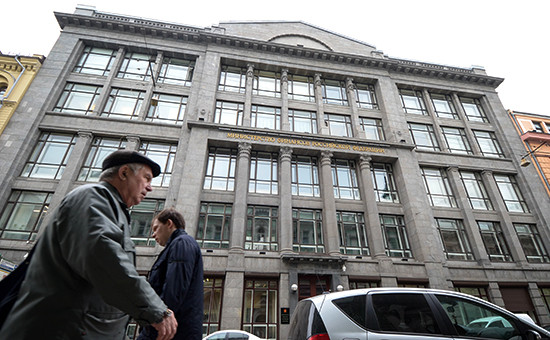
Photo: Yekaterina Kuzmina / RBC
According to Moses, the large deposits – the size of 100 million rubles. – Individuals can be forcibly converted to financial recovery in the capital of troubled banks in the Russian part of the new mechanism of bail-in (forced conversion of the claims of creditors of the third stage in subordinated loans, or the authorized capital of the bank). “In fact, the economic activity of physical persons with major contributions are no different from the legal” – quoted by the official Tass.
RBC Moses said that while this idea is being discussed within the framework of interdepartmental discussion in the Finance Ministry. “While there is no clear understanding of how the marginal amount of the deposit in question, whether it’s a billion or 100 million rubles.”, – He added.
Currently, the bail-in mechanism is not provided for by the Russian legislation, but discussion about way to close the “hole” problem banks, conducted in 2015 c. Particularly relevant issue has become amid rising cost the Deposit Insurance Agency (DIA) to reorganize troubled banks, and payments to depositors of banks with revoked license. In December, the DIA has asked the Central Bank with a request to allocate an additional 140 billion rubles. to finance the payment of compensation on deposits. In 2015, the Central Bank revoked the license of over 60 lending institutions. Only in Vneshprombank, the license which the regulator withdrew in January 2015, the size of the “hole”, according to the Central Bank, has exceeded 187 billion rubles.
According to the head of Sberbank German Gref, in 2016 losing a license can still about 10 % of Russian banks.
In January 2015 DIA also increased the amount of additional contributions to the Deposit Insurance Fund for banks to inflate the rates on deposits.
Earlier, deputy chairman of the Central Bank of Russia Mikhail Sukhov at the meeting of the management of the Central Bank with bankers organized by the BDA, said that the Central Bank expects in 2016 to begin to use the mechanism of bail-in – compulsory use of the creditors to solve the problems of unstable banks. He clarified that the decision to offer financial recovery of banks to minimize large-scale government spending while maintaining the confidence of creditors in the bank. In December, Central Bank head Elvira Nabiullina also said that the use of bail-in in some cases will not revoke the license, and to maintain the bank’s solvency with the prospect of growth.
In the middle of January of Moses from the Ministry of Finance said that on the first ne is expected to extend the mechanism of bail-in only for firms and companies. “The idea is clear that creditors become shareholders. On how this will work, who will make a decision at what stage how much all this is under consideration. Once we let a few weeks to this concept did work and discuss with key players. We should discuss with the Ministry of Economic Development, with the DIA, with the Central Bank, with the lawyers. Q hard … We believe that the first phase will only be legal entities, “- quoted him as saying« Interfax ».
Senior Director, Head of bank ratings ACRA Cyril Lukashuk notes that the global banking practice Salvation is a mechanism of global systemically important banks, which are involved as a means of creditor companies as well as large deposits of natural persons. In particular, it has been used in the rehabilitation of Bank of Cyprus, the creditors and large depositors forcibly became its owners. Authorities converted into shares of the bank deposits of € 100 thousand. “In the case of individuals assumed that converted into shares of the banks may be advantageously long-term investments with maturities of more than three or five years,” – he said. The expert said that the Russian legislation is also advisable to indicate, on the contributions of some urgency involved. “If this will not affect short-term deposits, ranging from six months to a year, this innovation will not be so badly perceived by the market. In Russia, often large deposits open for short periods, “- says Lukashuk.
No comments:
Post a Comment